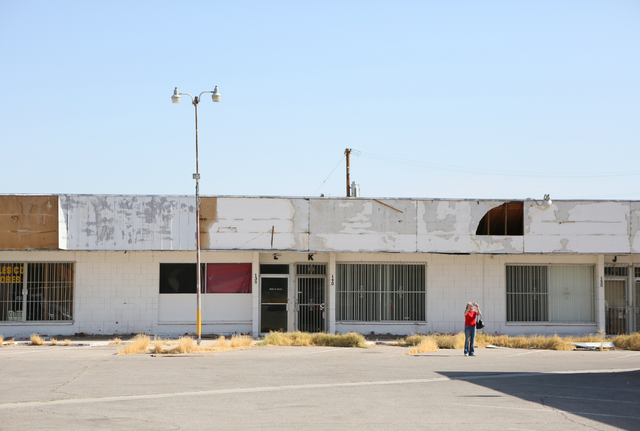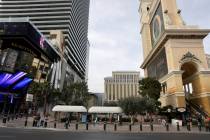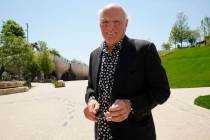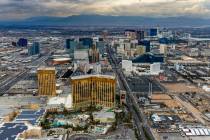Moulin Rouge site open for gambling — if only temporarily





For a few hours Wednesday, the Moulin Rouge was open for gambling.
Albeit, the action took place inside an air-conditioned trailer near a boarded-up dilapidated building on a corner of the nearly vacant 15-acre Bonanza Road site.
Slot machine route operator United Coin managed 16 aging slot games for eight hours inside the trailer. A smattering of gamblers tried their luck over the course of the day.
The activity allowed the property’s ownership to keep the gaming rights for the location alive for another 18 months.
GCA Capital Group CEO Daniel Rubino hopes the trailer won’t be necessary two years from now.
The New York City-based company, which got involved with the site almost three years ago, wants to tie in the location with the current downtown Las Vegas redevelopment and bring the Moulin Rouge back to life.
Through its GCA Leisure subsidiary, the company is developing plans for a $230 million to $250 million casino and entertainment location that would also include a hotel, retail and restaurants.
Rubino said the historical background — the Moulin Rouge is the only entertainment site recognized on the U.S. National Register of Historic Places for its significance to the Civil Rights Movement — is a major reason to restore the location.
“We want to take it to the next level,” Rubino said. “We love the story and the significance of the site. Without that, we wouldn’t be interested.”
Rubino said GCA cleaned up the Moulin Rouge’s ownership structure, which had roughly 250 owners at one point. The property went into foreclosure in 2009. In a statement, the company said it resolved “numerous legal, title and regulatory issues” surrounding the property.
The company also isn’t concerned about the neighborhood, which includes several vacant buildings, a few homeless encampments, the rescue mission, and the offices of the Review-Journal.
Rubino was excited to learn the Tenaya Creek Brewery was spending $1 million purchase a vacant warehouse across the three street for a taphouse and brewery.
Over the next six months, he said GCA will shore up its development plans and finalize the financing.
The work being accomplished along east Fremont Street by Zappos CEO Tony Hsieh through the Downtown Project is being viewed as somewhat of a road map.
“We want to tie the Moulin Rouge site into downtown,” Rubino said.
The Moulin Rouge became Las Vegas’ first integrated casino when it opened in 1955. It was home to such performers as Sammy Davis Jr., Ella Fitzgerald, Nat “King” Cole, and Louis Armstrong, who performed on the Strip but were not allowed to socialize or stay there.
It closed in November of that year and declared bankruptcy a month later.
Rubino said the Moulin Rouge had a short history of drawing entertainers, celebrities and patrons from all walks of life and all regions of the country, regardless of color.
He hopes the next phase would include online and mobile gaming, music and film recording venues, a digital content creation facility and an institute of learning.
“The time is right for this development,” Rubino said. “It wouldn’t have been a few years ago.”
Contact reporter Howard Stutz at hstutz@reviewjournal.com or 702-477-3871. Follow @howardstutz on Twitter.


















